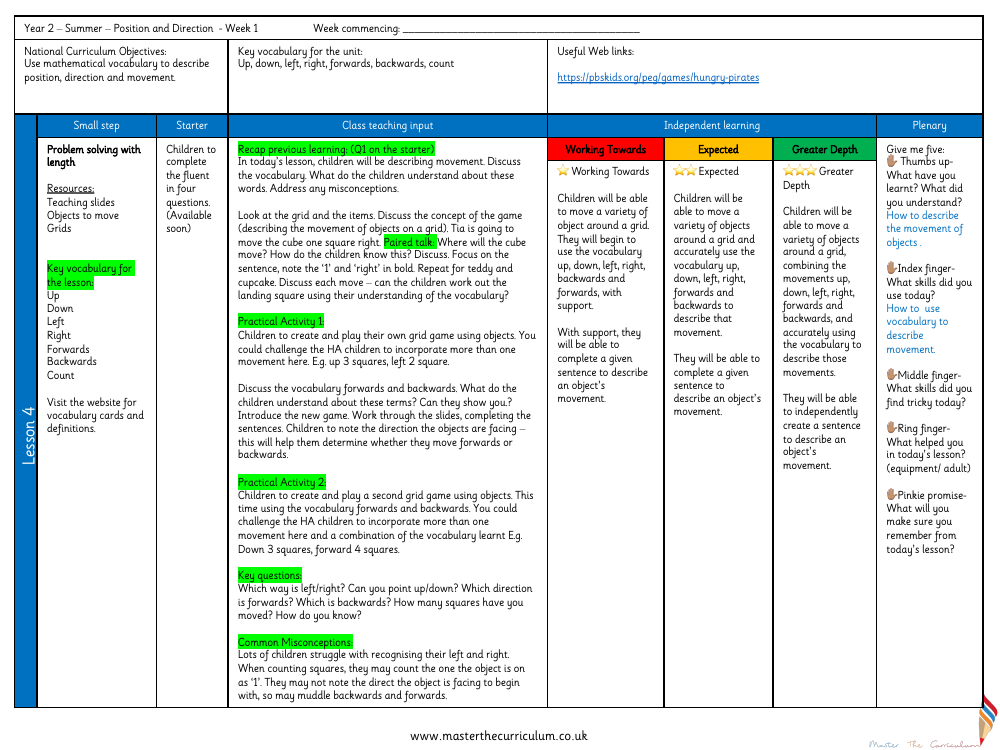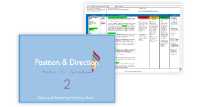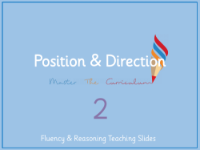Position and direction - Describe movement activity - Planning

Maths Resource Description
The Year 2 summer curriculum on Position and Direction focuses on helping children use mathematical vocabulary to describe position, direction, and movement. This particular week's lesson plan aims to develop children's understanding of spatial directions such as up, down, left, right, forwards, and backwards. To reinforce this vocabulary, teaching slides, movable objects, and grids are used as resources. The lesson begins with a starter activity that revisits previous learning and addresses any misconceptions. Children engage in discussions and practical activities, such as creating their own grid games, to solidify their understanding of the key terms. Through these interactive exercises, they learn to describe the movement of objects on a grid, enhancing their spatial awareness and language skills.
The lesson plan outlines two main practical activities. In the first, children create and play a grid game, moving objects according to specified directions. The second activity introduces the terms forwards and backwards, and children apply these concepts in another grid game. For more advanced learners, challenges include combining multiple movements and directions. Key questions prompt the students to think critically about the direction and distance of movements. Common misconceptions, such as confusing left and right or miscounting squares, are highlighted for attention. The lesson concludes with a reflective 'Give me five' session, where students articulate what they've learned, the skills they've used, and what they found challenging. The learning outcomes are tiered from 'Working Towards' to 'Greater Depth', ensuring that all children can progress at their own pace and ability level.


